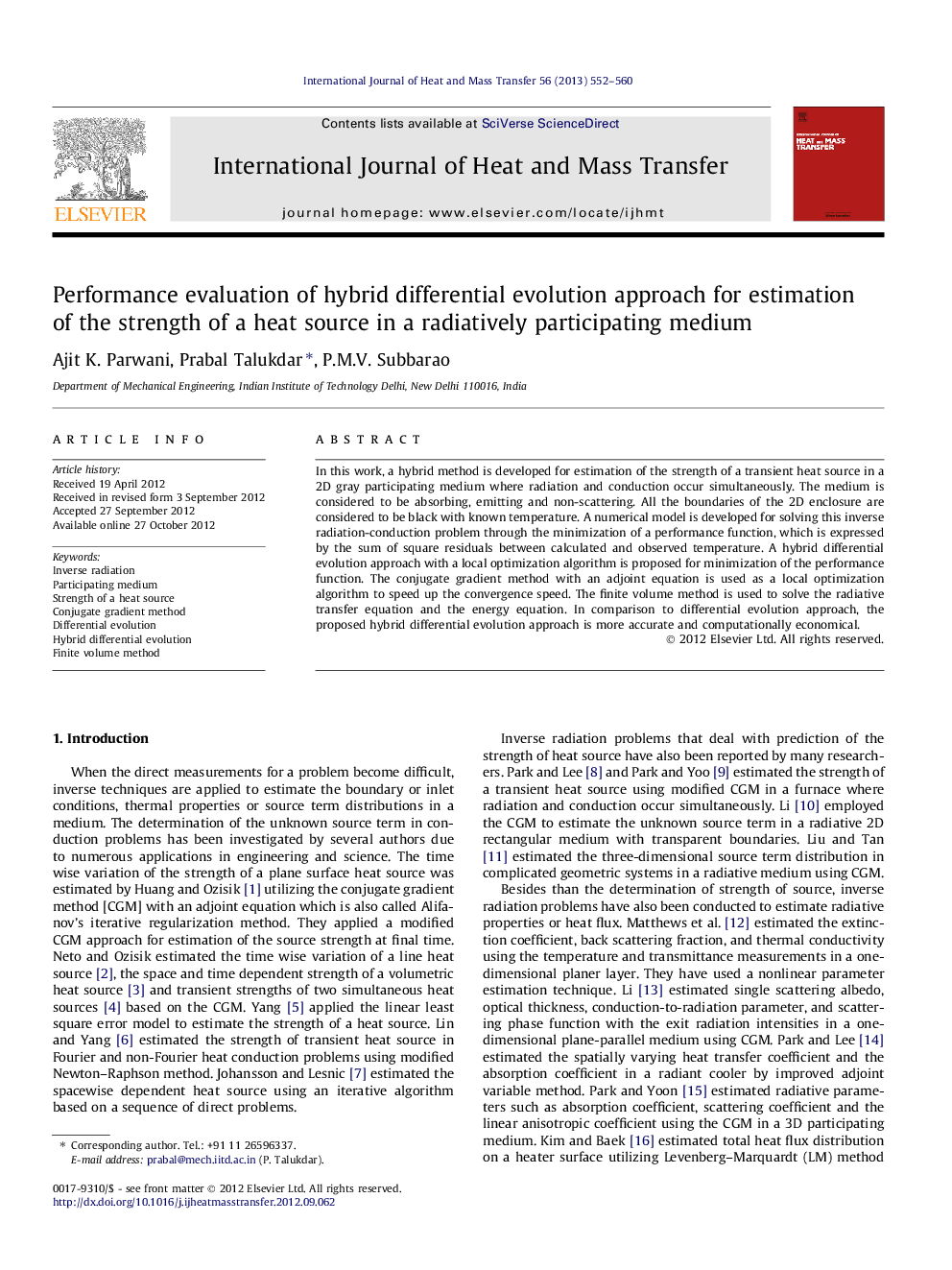| Article ID | Journal | Published Year | Pages | File Type |
|---|---|---|---|---|
| 658810 | International Journal of Heat and Mass Transfer | 2013 | 9 Pages |
Abstract
In this work, a hybrid method is developed for estimation of the strength of a transient heat source in a 2D gray participating medium where radiation and conduction occur simultaneously. The medium is considered to be absorbing, emitting and non-scattering. All the boundaries of the 2D enclosure are considered to be black with known temperature. A numerical model is developed for solving this inverse radiation-conduction problem through the minimization of a performance function, which is expressed by the sum of square residuals between calculated and observed temperature. A hybrid differential evolution approach with a local optimization algorithm is proposed for minimization of the performance function. The conjugate gradient method with an adjoint equation is used as a local optimization algorithm to speed up the convergence speed. The finite volume method is used to solve the radiative transfer equation and the energy equation. In comparison to differential evolution approach, the proposed hybrid differential evolution approach is more accurate and computationally economical.
Keywords
Related Topics
Physical Sciences and Engineering
Chemical Engineering
Fluid Flow and Transfer Processes
Authors
Ajit K. Parwani, Prabal Talukdar, P.M.V. Subbarao,
